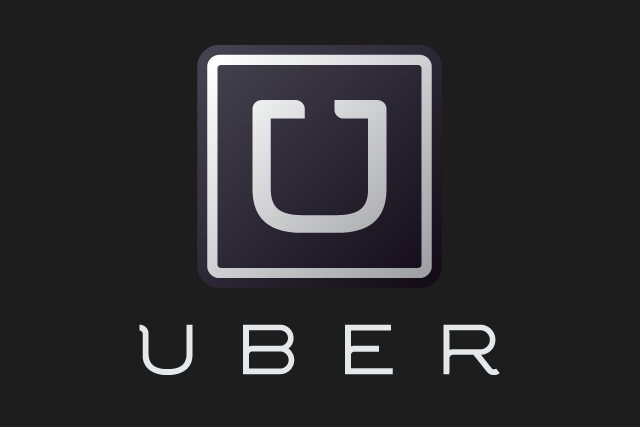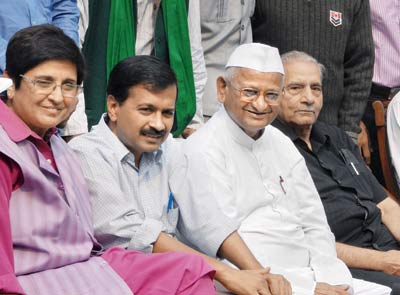
Laura Ries is a globally respected marketing consultant. Ries has run Ries & Ries, a consulting firm with her partner and father, Al, since 1994. Together they consult with Fortune 500 companies on brand strategy. Her new book Visual Hammer is just out. “The critical missing piece in most marketing programs is a powerful visual that can drive a brand into the mind,” says Laura. This book outlines the steps a brand needs to take to develop a visual hammer.
In this interview she speaks to Vivek Kaul.
Excerpts:
You talk about marketing messages from companies ignoring half of the prospect’s brain. What do you mean by that?
Everyone has two brains, a left brain and a right brain, plus the corpus callosum connecting the two brains. The left brain is associated with verbal messages; the right brain with visual messages and is also the site of your emotions. If a marketing message is totally verbal, it ignores the right brain and especially the right brain involvement with “emotion.” What things do people remember the best? Those things that have an emotional connection. The day you got married. The day you had an automobile accident. The day you graduated from college. Etc. A totally verbal message is usually flat and unemotional. That greatly hinders the memorability of the message.
Could you explain this through an example?
The old-fashioned Coca-Cola bottle (which the company calls a “contour” bottle) communicates the fact that Coke is the original cola, the authentic cola, the real thing. Coca-Cola has also used the verbal (“the real thing”) but it just doesn’t have the same emotional impact of the bottle itself. Of course, the best strategy to use would be both. The Coke bottle (the visual hammer) and the verbal nail (“the real thing.”) They reinforce each other.
You say that most marketing messages are abstract ideas built around concepts like good consumer service, superior reliability, dependable performance etc. Why is that?
In general, a major corporation would first develop a verbal strategy for a brand. Then the company would “sell” the verbal idea to top management before they bring in an advertising agency to develop the idea. And since most corporate executives are left brainers, they readily accept verbal ideas. There is a lot of evidence that top management is dominated by left brainers. Right brainers are usually introverts and not very talkative. Left brainers usually are extroverts and very talkative. Now which type is likely to make it to the top of any organization? A quiet, introverted left brainer. Or a talkative, extroverted right brainer. When a CEO makes a speech, he or she usually stands behind a podium and reads from a Teleprompter or from a script. Totally word-oriented and a sure sign of a left brainer.
But exceptions are always there…
There are exceptions. Steve Jobs of Apple was a right brainer, but of course, he was once fired from Apple. After he returned to Apple, his “speeches” involved a screen 40-feet wide and enormous visuals, not exactly the type of speech a left brainer would make.
Could you share some of the most abstract marketing messages with us?
Here are some recent slogans from major global corporations. starting with the letters A and B.
ABB: “Power and productivity for a better world.”
Accenture: “High performance. Delivered.”
Acura: “Advance.”
Air France: “Making the sky the best place on earth.”
Audi: “Truth in engineering.”
BlackBerry: “Be bold.”
Bridgestone tires: “Your journey, our passion.”
British Airways: “To fly. To serve.”
None of these slogans can serve as verbal nails because they are not specific enough. They are typical abstract ideas that need to be brought down to earth before they can be visualized. I could go through the rest of the alphabet and give you dozens of similar slogans. All abstractions.
You write “Words are what they use the most and are most familiar with. Yet there is a lot of evidence that visuals play a far more important role in marketing than do words”. Why do you say that?
The reason Visual Hammer is such a helpful concept is that very few companies are actually using visual hammers. That’s why successful examples are few. The lime in the top of a Corona beer bottle. There were dozens of Mexican beers imported into America, but until the arrival of Corona none used a visual hammer. The lime help to communicate the fact that Corona is an authentic Mexican beer. Thanks to its visual hammer, Corona went on to become the best-selling imported beer in America and the best-selling Mexican beer on the global market. It also was ranked by Interbrand, a branding consultancy, as the 86th most valuable brand in the world (and the only Mexican brand on the list) worth $3.9 billion. The last time I was in Mumbai, a diner at the table next to us ordered a Corona beer. And sure enough, the waiter served the beer with a lime on top of the bottle.
Any other example?
The red soles of, a French designer who regularly tops The Luxury Institute’s index of “most prestigious women’s shoes.” In 1992, he applied red nail polish to the sole of a shoe because he felt the shoes lacked energy. “This was such a success,” reported Mr. Louboutin, “that it became a permanent fixture.” The red sole was the hammer, but what was the nail? It was the stiletto (heel heights of 120mm or more) which Louboutin helped bring back into fashion in the last two decades. To build a brand you need both: The red sole and the stiletto. Let me give you another example. BMW, for example, owns the word “driving,” an achievement that lifted the brand from nowhere into the world’s largest-selling luxury-car brand. But what put the “driving” idea into the minds of consumers? What’s was BMW’s visual hammer? It was a long-running, consistent series of television commercials showing happy owners driving their BMW vehicles over winding roads. “The ultimate driving machine” was the nail. But it was the visual hammer was put that idea into the mind.
You write in your new book “Unless there is an instant connection with a verbal idea, a visual becomes nothing but wasted ammunition in a marketing war.” Can you elaborate on that through an example?
There is a lot more to say about how visuals are received by the brain and how verbal messages are received. For example, you are driving down a street and a stoplight in front of you changes to “red.” Your foot hits the brake . . . without conscious thought on your part. That’s the right brain at work. If a stoplight used words (Stop, Caution, Go) instead of visuals, your left brain would have to first translate those type-set words into “aural” sounds that your mind could understand. That takes time and effort. You might be reading an article and you get to the end of a paragraph and suddenly think to yourself, What was that all about? In other words, it takes effort for your left brain to understand printed words. With a visual, however, your right brain can almost instantly understand a visual and react to it.
How is that linked to building a brand?
In building a brand, however, visuals are only effective if they “say something” about the brand. Advertising is filled with visuals, but very few visual hammers. It’s only things like the Coke bottle (authentic cola), the lime on top of a Corona (authentic Mexican beer), the TV commercials showing happy BMW owners (the ultimate driving machine), which hammer the nail in.
You have repeatedly talked about the visual hammer hammering the verbal nail. What do you mean by that?
The Marlboro story is probably the best example of the power of a visual hammer. We don’t like to feature it, however, since smoking is such a health hazard. Before Marlboro was launched, there were four exceptionally strong cigarette brands in America: Lucky Strike, Camel, Chesterfield, Winston. All of these brands were “unisex,” in the sense that they appealed to both men and women. In general, they pictured both men and women smoking.
Marlboro narrowed the focus to men only. (Another strategic concept that we strongly recommend for an also-ran brand.) In other words, Marlboro wanted to become a masculine cigarette. And the cowboy is perhaps the best visual to use to communicate the masculinity idea.) In America today, Marlboro outsells the next 13 cigarette brands combined. Marlboro is also the largest–selling global cigarette brand.
Why is it very difficult today to put a verbal idea into a consumer’s mind without a visual hammer?
The world is awash in words. This is especially true because of the Internet. Consumers are drowning in Emails, Tweets, Facebook pages and other web-oriented media. To cut through the clutter with a verbal message only is extremely difficult unless you have a revolutionary development. And if you have a revolutionary development, you probably don’t need much marketing help. In 2010, the five largest advertisers in America were AT&T, Verizon, Chevrolet, Ford and Toyota. Together these five brands spent $6.9 billion on advertising. What was the verbal idea, or slogan, used by each of these brands? I’ll guarantee that few consumers would remember. Here they are.
AT&T . . . “Rethink possible.”
Verizon . . “Rule the air.”
Chevrolet . . . “Chevrolet runs deep.”
Ford . . . . “Drive on.”
Toyota . . . “Moving forward.”
None of these slogans can be effectively visualized into a hammer. That’s why, in spite of the $6.9 billion, most consumers don’t remember them.
Could you share some marketing messages from companies which have good visual hammers and why do you think they are good?
In general, it is difficult to create a memorable visual hammer. One exception is for leader brands. Any simple visual used consistently with a powerful leader brand can become a visual hammer.
The “Golden Arches” of McDonald’s.
The “Swoosh” of Nike.
The “Tri-Star” of Mercedes-Benz.
What these visual hammers are communicating is “leadership,” and leadership is probably the most important verbal idea for a brand. If consumers perceive your brand to be the leader in a category, your brand can maintain that leadership for decades. Hertz in rent-a-cars. Kleenex in pocket tissue. Heinz in ketchup.
You say that unlike a verbal idea, a visual hammer can cross International borders with no translations necessary. Could you explain that through an example?
The Coke bottle, the Marlboro cowboy, KFC’s Colonel Sanders, Mercedes-Benz’s Tri-Star, Corona’s lime are all global visual hammers that say something about the brands. Coca-Cola is sold in 206 countries and 74 percent of the company’s revenues come from outside the United States. Coca-Cola can use the same contour bottle visual in every country, but trying to translate a single slogan into dozens of different languages would be very difficult. And sometimes a verbal slogan just cannot be translated into another language. For example, my dad (marketing guru Al Ries) wrote a book called “Bottom-Up Marketing,” a verbal idea that works well in English. But the Spanish translators of the book couldn’t find any Spanish words that could capture that idea. (They were all vulgar expressions not suitable for a book title.)
Coca-Cola’s exceptionally-strong visual hammer puts its major competitor in a difficult position. What should Pepsi-Cola do?
Narrow its focus. In general, you cannot find a visual hammer with a broad conceptual idea. You have to narrow that idea. For example, BMW could have used “performance” as its verbal strategy, but how would you visualize that verbal idea? Instead, they narrowed the focus to “driving,” an aspect of performance. That allowed them to run “driving” TV commercials to drive in the idea to prospects.
So what is Pepsi-Cola’s new verbal strategy, just announced last week. “Live for now.” How can you visualize a conceptual idea like that? You can’t. Years ago, Pepsi-Cola had a verbal idea that could be visualized. “The Pepsi Generation.” In other words, Pepsi was appealing to the youth market, the Pepsi generation, a narrow-the-focus concept. That idea could have been easily visualized. As a matter of fact, even today, most consumers remember The Pepsi Generation, but none of the dozens of other slogans the brand has used.
You write “Today, “The real thing” lives on in newspapers, magazines, books and television shows in spite of the fact that Coca-Cola used the slogan only once, for just two years, more than 40 years ago.” The real thing was a slogan that Coke used just once for two years, 40 years ago. But it lives on. So why does the company keep coming up with all these different slogans which no one can remember?
The dominate concept in the advertising field is “creativity.” Ideas are evaluated based on how creative they are. But what is creativity? An idea is usually considered “creative,” if it’s “new and different.” An old idea used before can never be considered “creative.” That’s why Coca-Cola refuses to use it. There’s also the influence of the advertising agencies that handle big accounts like Coca-Cola. Advertising agencies live or die based on their abilities to win awards in the annual creative contests. And you can’t win an advertising award if your advertising is not creative. Take Marlboro which has used cowboy visuals ever since its launch in 1953. I don’t believe Marlboro has ever won an advertising award because its advertising is not “creative” in the usual sense of the word.
(The interview was originally published on May 14,2012, in the Daily News and Analysis (DNA). http://www.dnaindia.com/money/interview_marlboro-is-probably-the-best-example-of-the-power-of-a-visual-hammer_1688368).
(Vivek Kaul is a writer and can be reached at [email protected])



